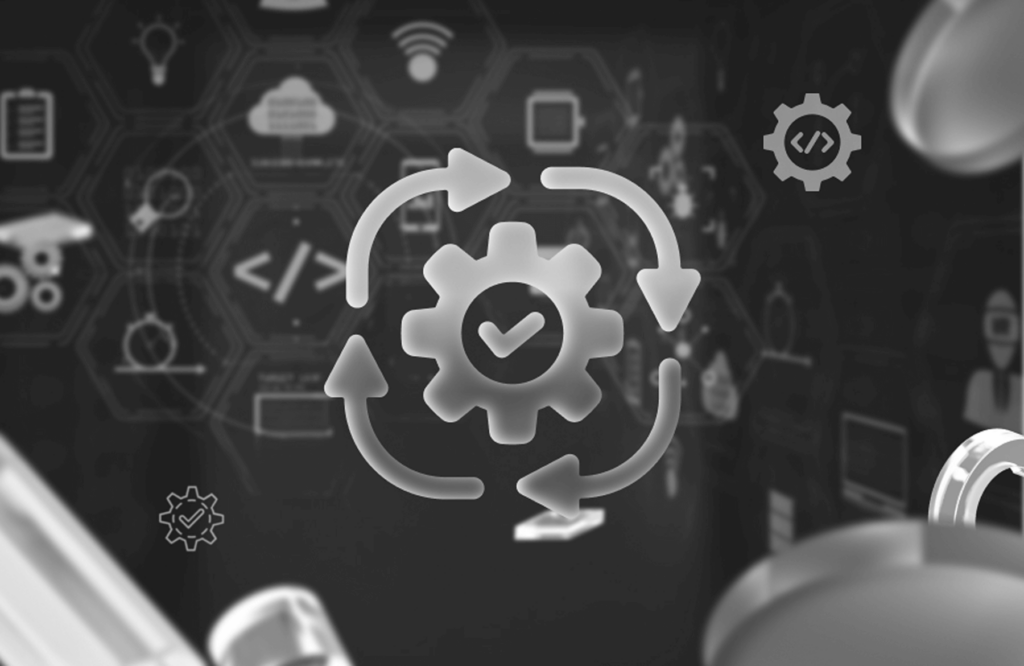The Importance of Compliance in Software Development


Compliance in software development means adherence to a set of rules, standards, regulations, and guidelines that govern the design, development, and deployment of software. These rules can originate from various sources, including legal requirements, industry standards, and organizational policies. The goal of compliance in software development is to ensure that software products and processes meet specific criteria related to security, privacy, quality, and ethical considerations.
Rapidly evolving technological landscape and innovation bring the need for responsible development practices; that’s why compliance in software development has become a critical aspect.
Why is compliance important?
Compliance in software development is like playing by the rules, keeping things safe, making people trust us, and making sure our software works fine and is well accepted by everyone. Inability to follow software development compliance standards could result in fines, legal problems, users’ disappointment, losing an opportunity to go global with our product, and so on.
Key aspects of compliance
Key aspects of compliance in software development include:
- Legal and regulatory compliance
- Security standards
- Quality assurance standards
- Privacy protection
- Ethical considerations
- Industry standards
- Documentation and reporting
- Continuous monitoring and improvement
- Global considerations
- Risk mitigation
Let’s discuss each of them in more detail.
Legal and regulatory compliance
Legal and regulatory compliance includes adherence to laws and regulations relevant to the software industry. Various countries have enacted laws governing data protection, privacy, and security, such as the General Data Protection Regulation (GDPR) in Europe and the Health Insurance Portability and Accountability Act (HIPAA) in the United States. Failure to comply with these regulations can result in severe penalties, legal action, and damage to an organization’s reputation.
Security standards
Security is about implementing measures to protect against unauthorized access, data breaches, and other cyber threats. This may involve following established security frameworks and standards.
One of the primary concerns in software development is the protection of user data. Adhering to compliance standards ensures that developers implement robust security measures to safeguard sensitive information. Users today are more aware of their digital rights, and organizations that prioritize data security and privacy build trust with their customers.
Quality assurance (QA) standards
Compliance standards include guidelines for ensuring the reliability, performance, and overall quality of software. This includes testing methodologies, code review processes, and documentation practices. Following these standards helps developers create stable and dependable software. This not only improves the user experience but also minimizes the risk of system failures, data breaches, and other issues that could negatively impact the organization and its end users.
Privacy protection
Privacy means ensuring that software applications handle user data responsibly and in accordance with privacy laws. This involves implementing privacy-by-design principles and obtaining user consent when required.
Ethical considerations
Compliance in software development extends beyond legal and regulatory requirements; it also encompasses ethical considerations. Developers have a responsibility to create software that is inclusive, accessible, and respects the rights and values of diverse user groups. Ethical software development contributes to positive social impact and helps build a sustainable and responsible tech industry. Ethical guidelines include, for example, avoiding biased algorithms and considering the social impact of technology.
Industry standards
Industry standards are about following standards and best practices specific to the industry in which the software operates. For example, financial software may need to comply with regulations like Sarbanes-Oxley (SOX).
Documentation and reporting
Following reporting standards means maintaining comprehensive documentation to demonstrate compliance with various standards. This documentation is often crucial in audits and regulatory assessments.
Continuous monitoring and improvement
Compliance standards evolve over time to address emerging challenges and technological advancements. Engaging in compliance initiatives fosters a culture of continuous improvement within software development teams. By staying current with industry standards and updating practices in response to changes in regulations, developers can enhance their skills, adopt new technologies, and contribute to the overall advancement of the field.
Global considerations
In an interconnected world, software is often distributed globally. Adhering to international compliance standards, which may vary across regions and countries, opens doors to a broader market. Organizations that meet the regulatory requirements of multiple regions demonstrate a commitment to responsible business practices, making it easier to enter new markets and establish a global presence.
Risk mitigation
Compliance frameworks provide a structured approach to identifying, assessing, and mitigating risks associated with software development. By following industry best practices and standards, developers can proactively address potential vulnerabilities, reducing the likelihood of security breaches, financial losses, and reputational damage.
[blog-subscribe]
Establishment of software compliance standards
Compliance standards are typically developed through a collaborative process involving experts, industry professionals, regulatory bodies, and relevant stakeholders.
Below, we will summarize the most important steps of a typical standards development process.
- Identification of needs: The process usually begins with identifying a need for standardization in a particular industry or area. This need could arise from concerns about safety, security, interoperability, quality, or other factors.
- Formation of Standards Development Organizations: Standards are often developed by organizations known as Standards Development Organizations (SDOs). These organizations bring together experts, stakeholders, and representatives from relevant industries to collaborate on the creation of standards.
- Research and drafting: Extensive research is conducted to understand the current state of affairs in the relevant industry or domain. Based on this research, draft standards are developed, outlining the software compliance requirements and guidelines that organizations should follow.
- Public review and comment: The draft standards are typically made available for public review and comment. This step allows a wide range of stakeholders, including industry professionals, organizations, and the public, to provide feedback and suggestions for improvement.
- Revisions and approval: The standards undergo revisions based on the feedback received during the public review process. Once the standards development process is complete and there is consensus among stakeholders, the standards are officially approved.
- Publication and distribution: The finalized standards are published and made available to the public. They may be distributed in various formats, including printed documents, online resources, and official publications.
Commitment to compliance standards through certifications
There are numerous certifications for compliance standards across various industries, each addressing specific areas such as information security, quality management, environmental practices, and more. They are a formal recognition that an organization, product, process, or individual complies with a specific set of standards. Certifications are often awarded by third-party certification bodies that assess and verify an entity’s adherence to established standards. The certification generally happens in 5 steps.
- Preparation: Organizations or individuals seeking certification prepare for the assessment by implementing the necessary processes, policies, and controls in accordance with the relevant standards.
- Assessment: A third-party certification body conducts an assessment or audit to verify that the entity meets the software compliance requirements outlined in the standards. This assessment may include document reviews, interviews, and on-site inspections.
- Compliance verification: The certification body verifies that the entity’s practices align with the standards and has effectively implemented the required processes.
- Issuance of certification: If the entity successfully meets the criteria, the certification body issues a certification, acknowledging that the organization, product, process, or individual complies with the specified standards.
- Surveillance audits: Some certifications require ongoing monitoring to ensure continued compliance. Surveillance audits may be conducted periodically to verify that the entity maintains adherence to the standards.
Certifications provide evidence that an entity is following established best practices and standards. They often enhance credibility, build trust with stakeholders, and can be used as a competitive advantage in the marketplace. Common certifications in various industries include ISO certifications (e.g., ISO 9001 for quality management, ISO 27001 for information security), PCI DSS for payment card industry security, and certifications specific to sectors like healthcare (e.g., HIPAA compliance).
Common software development standards
There are many well-known and widely used software development standards to guide and govern the processes, practices, and quality of software development. Understanding and following these standards is beneficial for individuals and organizations because it demonstrates a commitment to industry best practices, enhances the organization’s reputation, and helps mitigate risks associated with security, compliance, and project delivery.
- ISO/IEC 27001: Information Security Management System (ISMS): It is a widely recognized and respected standard that focuses on information security management, covering areas such as data protection, access control, and risk management.
ISMS is a framework of policies, processes, and procedures that includes legal, physical, and technical controls involved in an organization’s information risk management processes. The purpose is to manage and protect sensitive information. - ISO 9001: Quality Management System: ISO 9001 applies to various industries, and not only software development, to ensure quality management. It focuses on quality management, customer satisfaction, and continuous improvement processes.
- GDPR (General Data Protection Regulation): GDPR ensures data protection and privacy for individuals within the European Union (EU) and the European Economic Area (EEA). It outlines requirements for the handling of personal data.
- HIPAA (Health Insurance Portability and Accountability Act): It applies to the healthcare industry in the United States and sets standards for protecting sensitive patient information.
- IEEE (Institute of Electrical and Electronics Engineers) Software Engineering Standards: It encompasses various standards covering different aspects of software engineering, such as documentation, testing, and quality assurance.
- CMMI (Capability Maturity Model Integration): CMMI is a framework for process improvement in software development and project management. It helps organizations assess and improve their software development processes, leading to higher-quality products.
- ITIL (Information Technology Infrastructure Library): Offers a set of practices for IT service management (ITSM) to align IT services with the needs of the business.
- OWASP (Open Web Application Security Project): Produces freely available security-related resources for organizations developing web applications. The OWASP Top Ten identifies and addresses the top security risks in web applications, helping developers build more secure software by addressing common vulnerabilities and threats.
- FISMA (Federal Information Security Management Act): Applies to U.S. federal agencies and establishes information security practices to protect government information and infrastructure.
These compliance standards are just a subset of the many guidelines and code development regulations. The specific standards applicable to a project depend on factors such as the industry, the type of data being handled, and the geographic locations in which the software is deployed. Normally, multiple compliance standards should be followed in the software development process to build secure, high-quality software. For example, look at the Secure Software Development Lifecycle (SSDLC) framework (https://www.qodo.ai/glossary/secure-software-development-lifecycle/). Although it is not a compliance standard in the traditional sense, SSDLC is aligned with various compliance standards (ISO/IEC 27001, GDPR, OWASP, HIPAA) and regulations that emphasize the importance of security in software development.
It’s tremendously important for organizations to identify and understand the relevant compliance standards and integrate them into their software development processes to ensure legal, ethical, and secure practices. Failure to do so can lead to legal consequences, financial losses, damage to reputation, and, in some cases, the suspension of software deployment or use.

